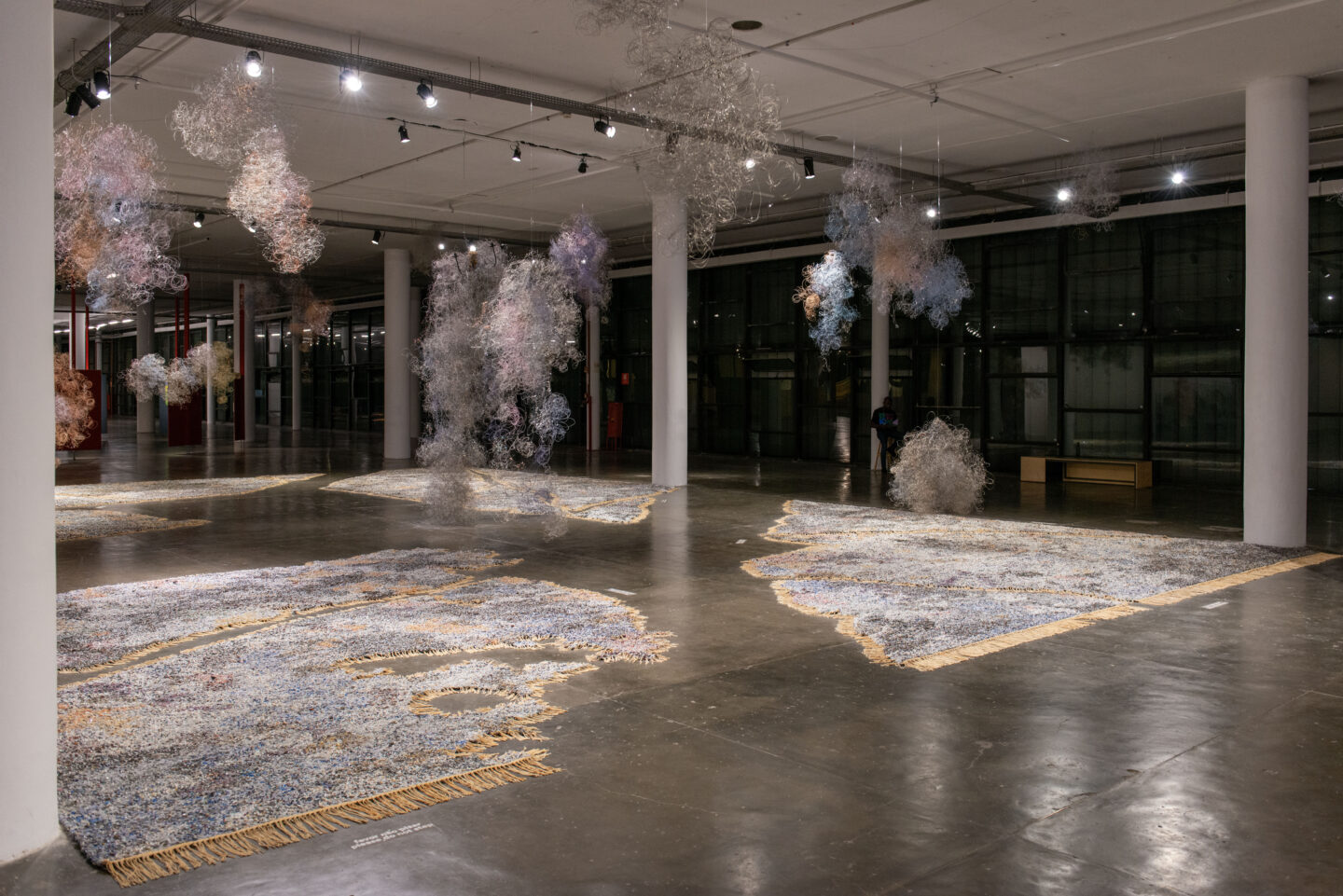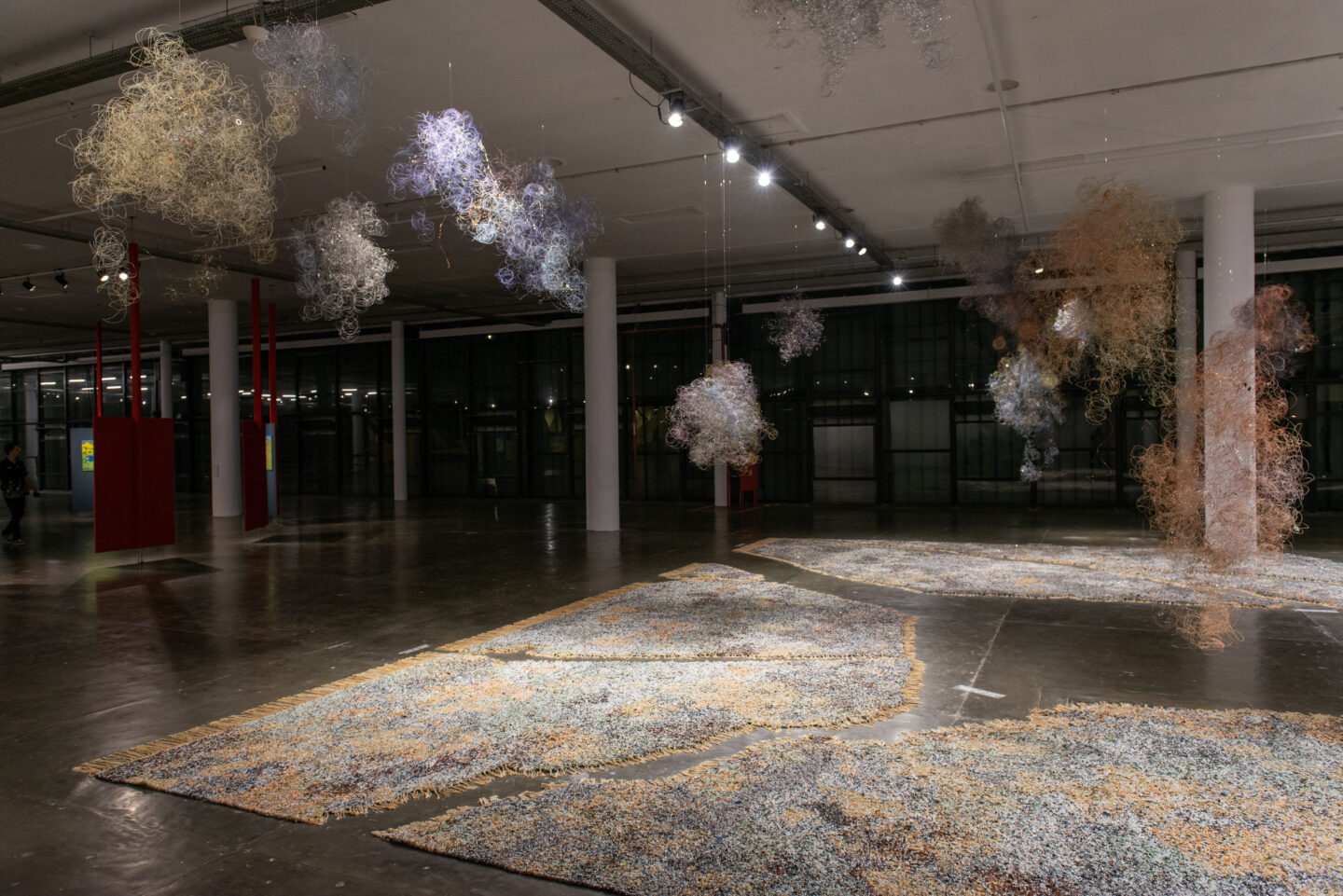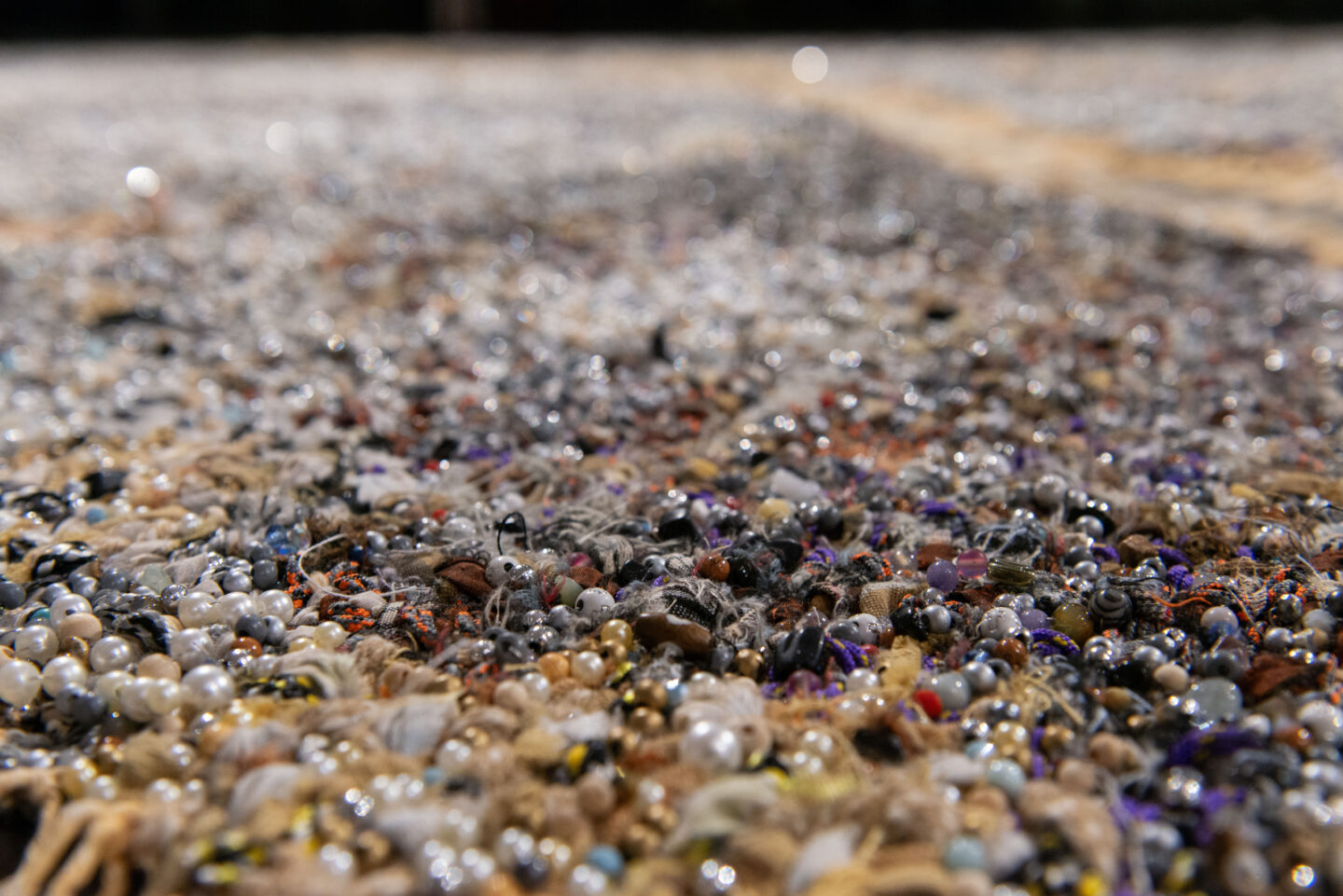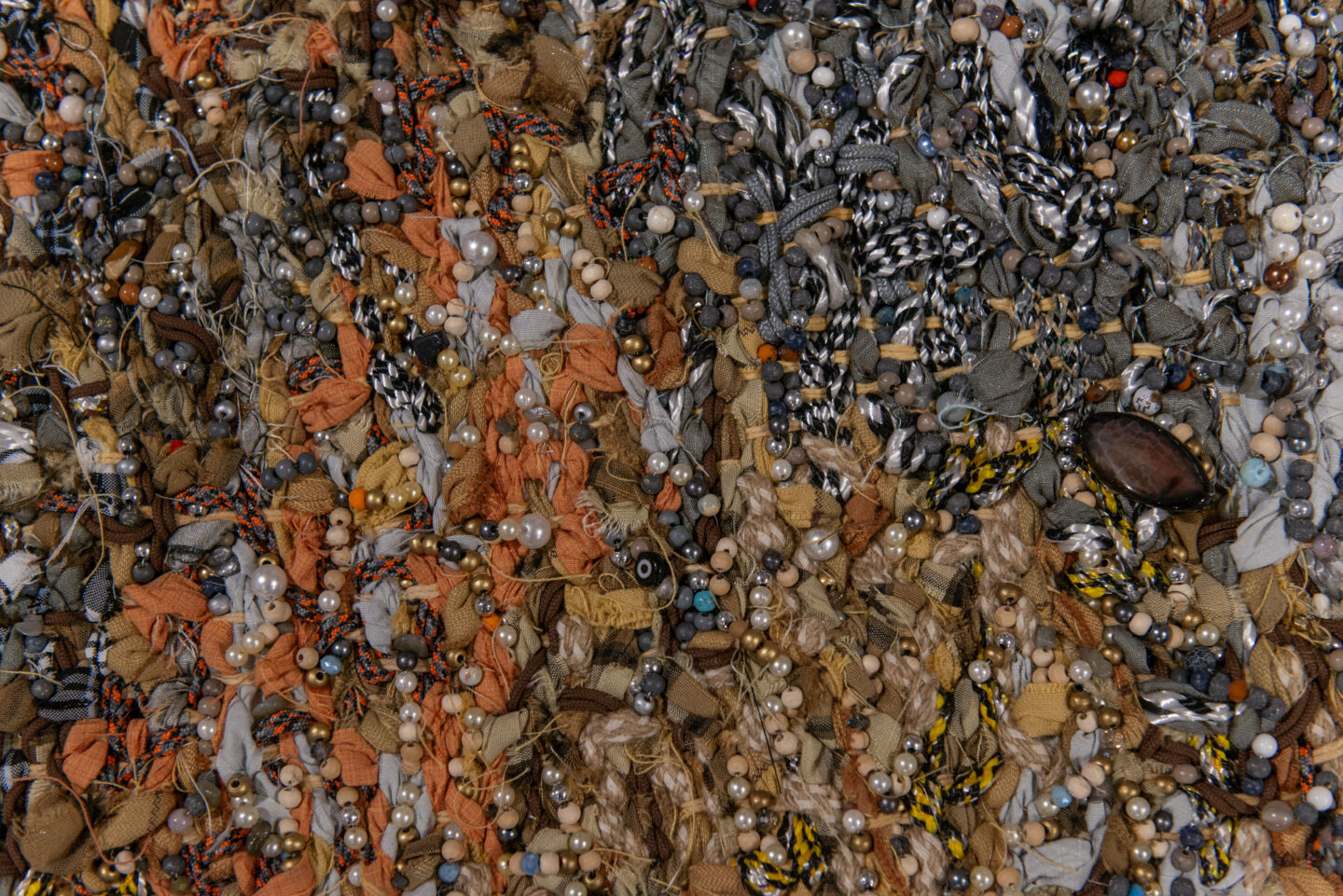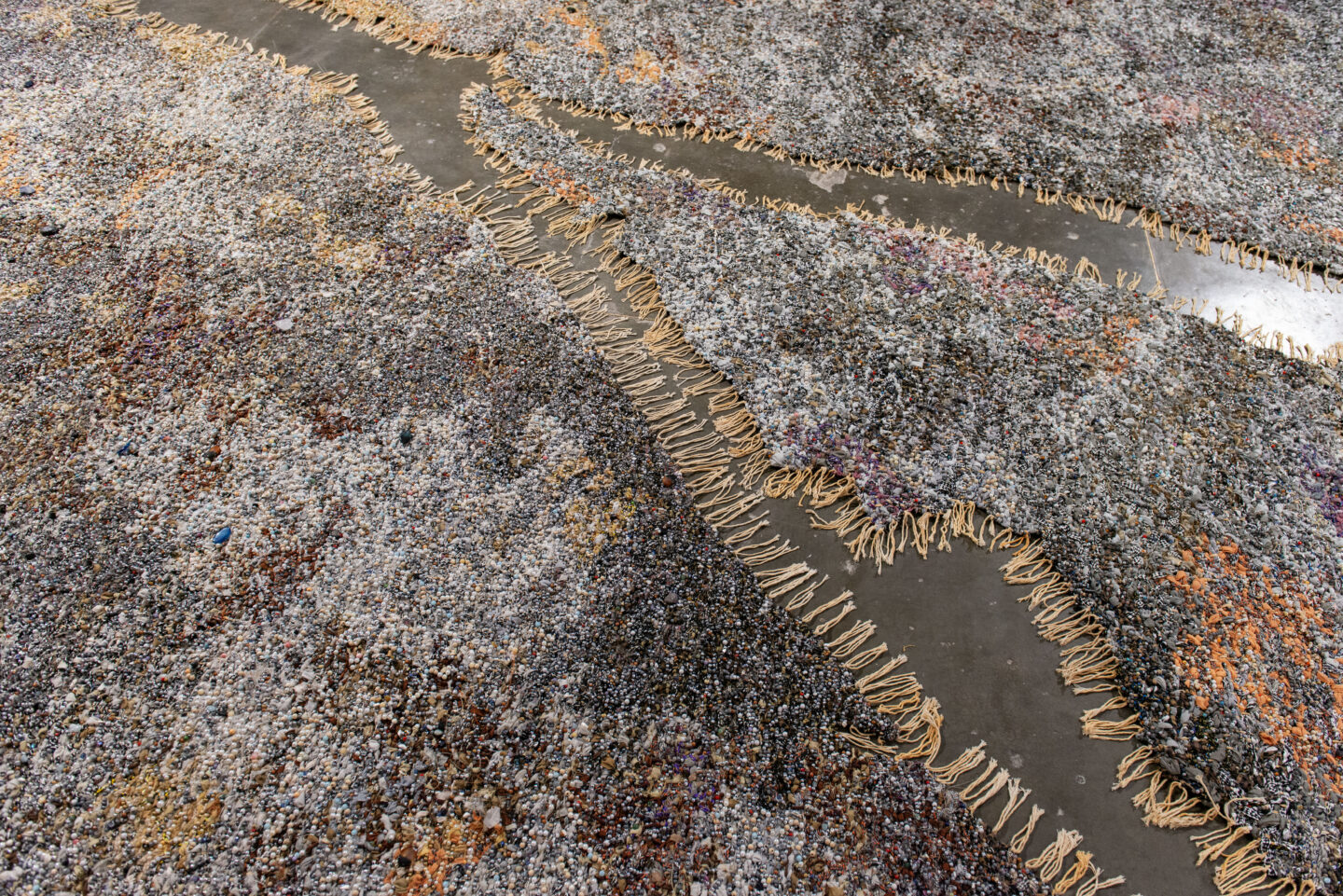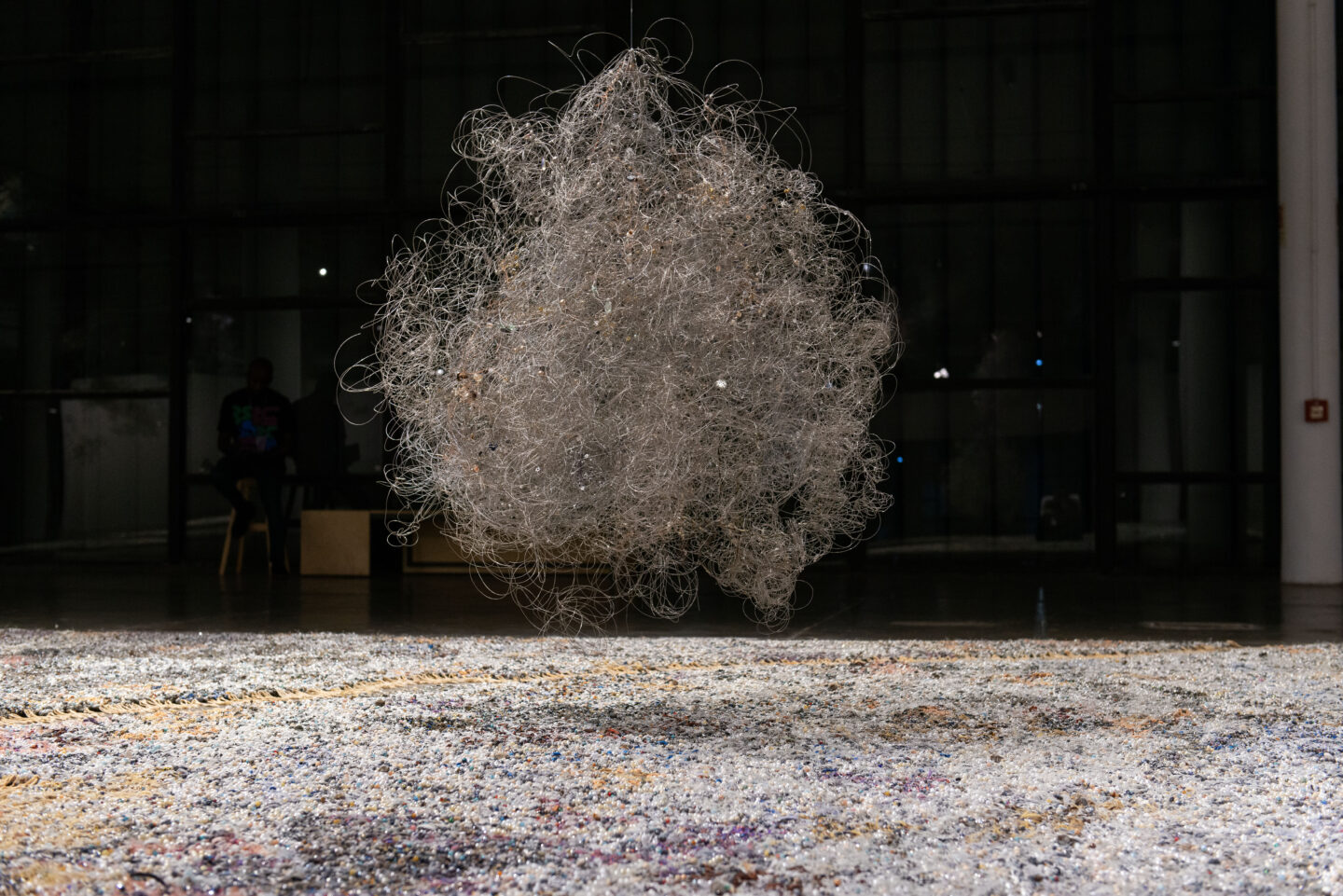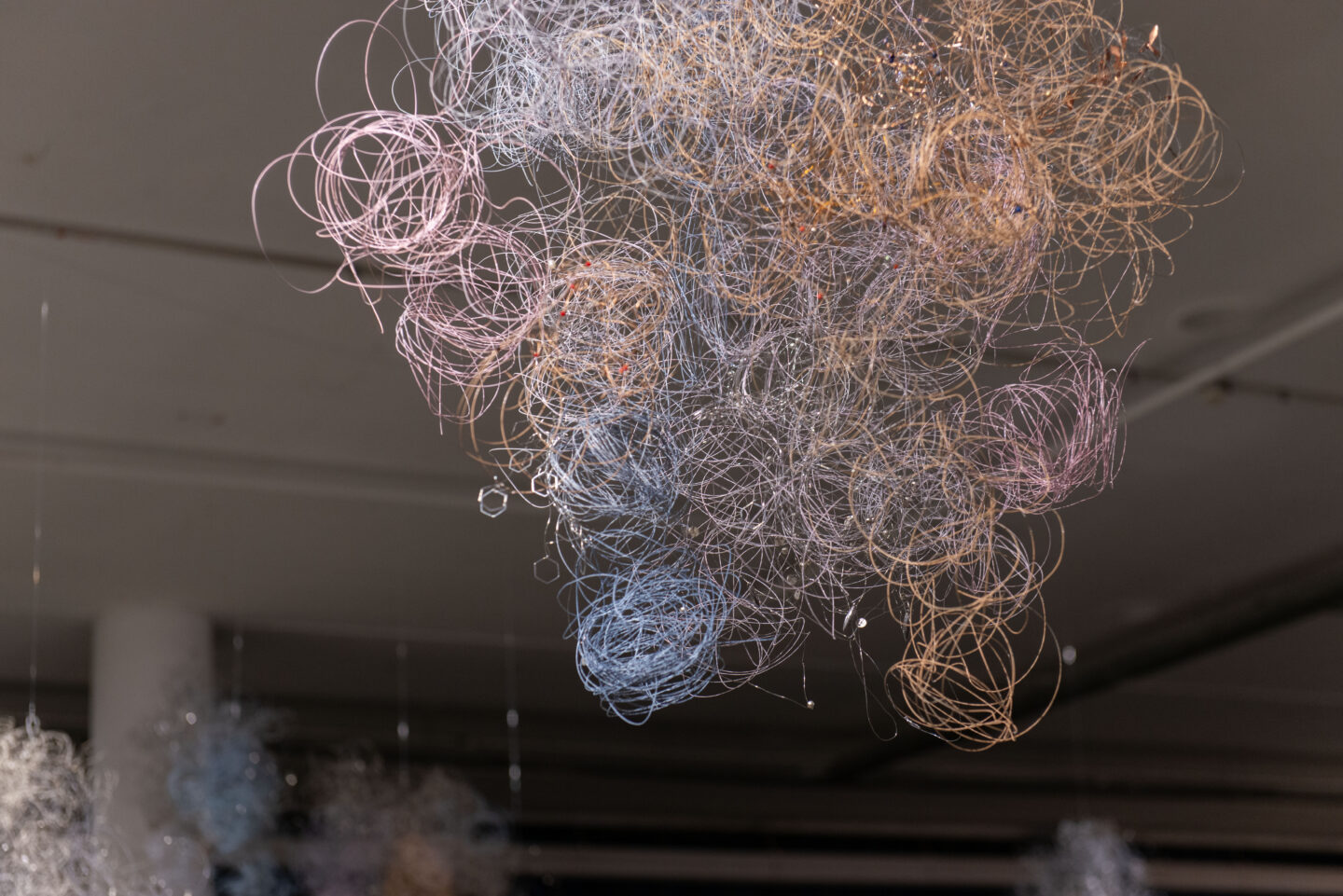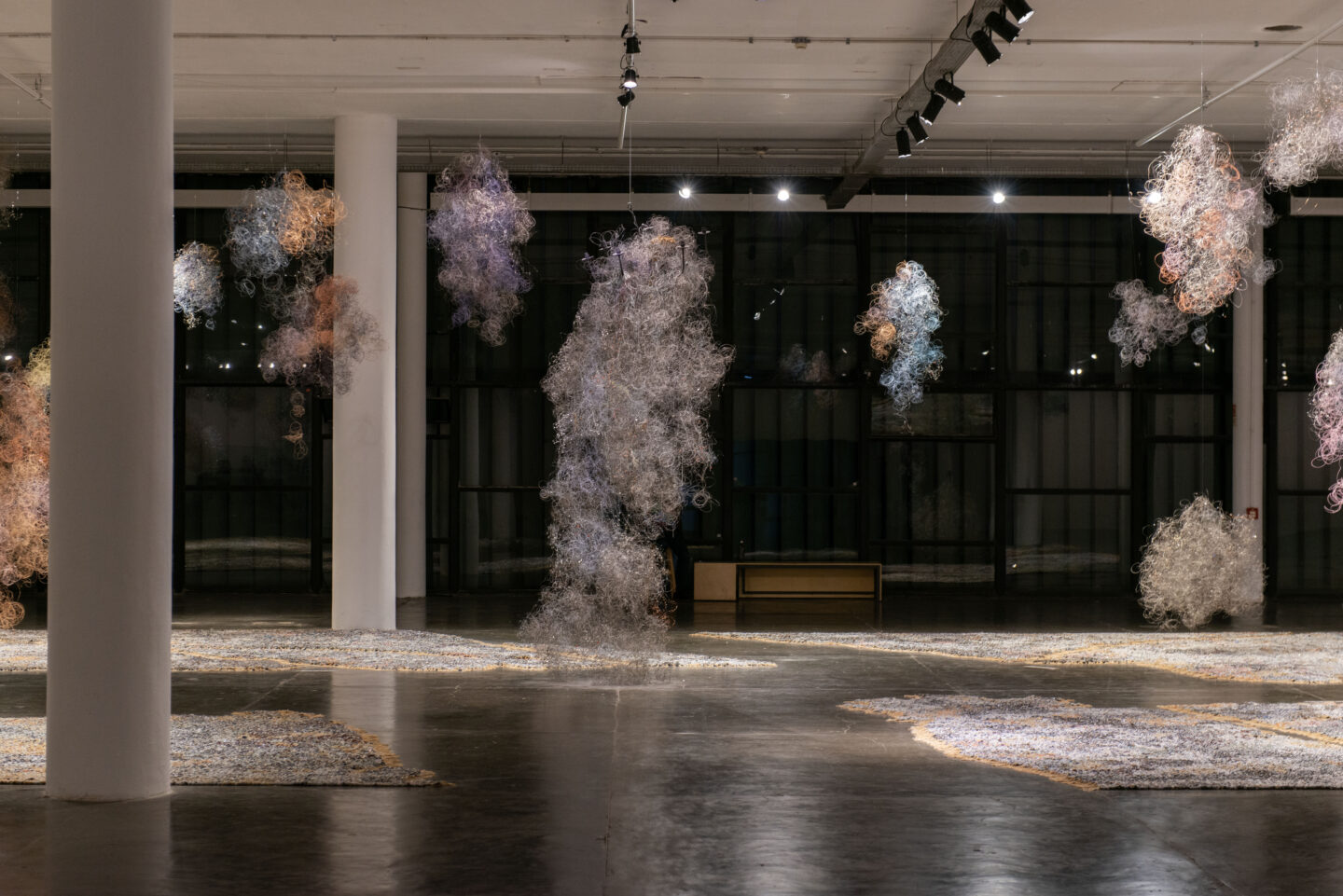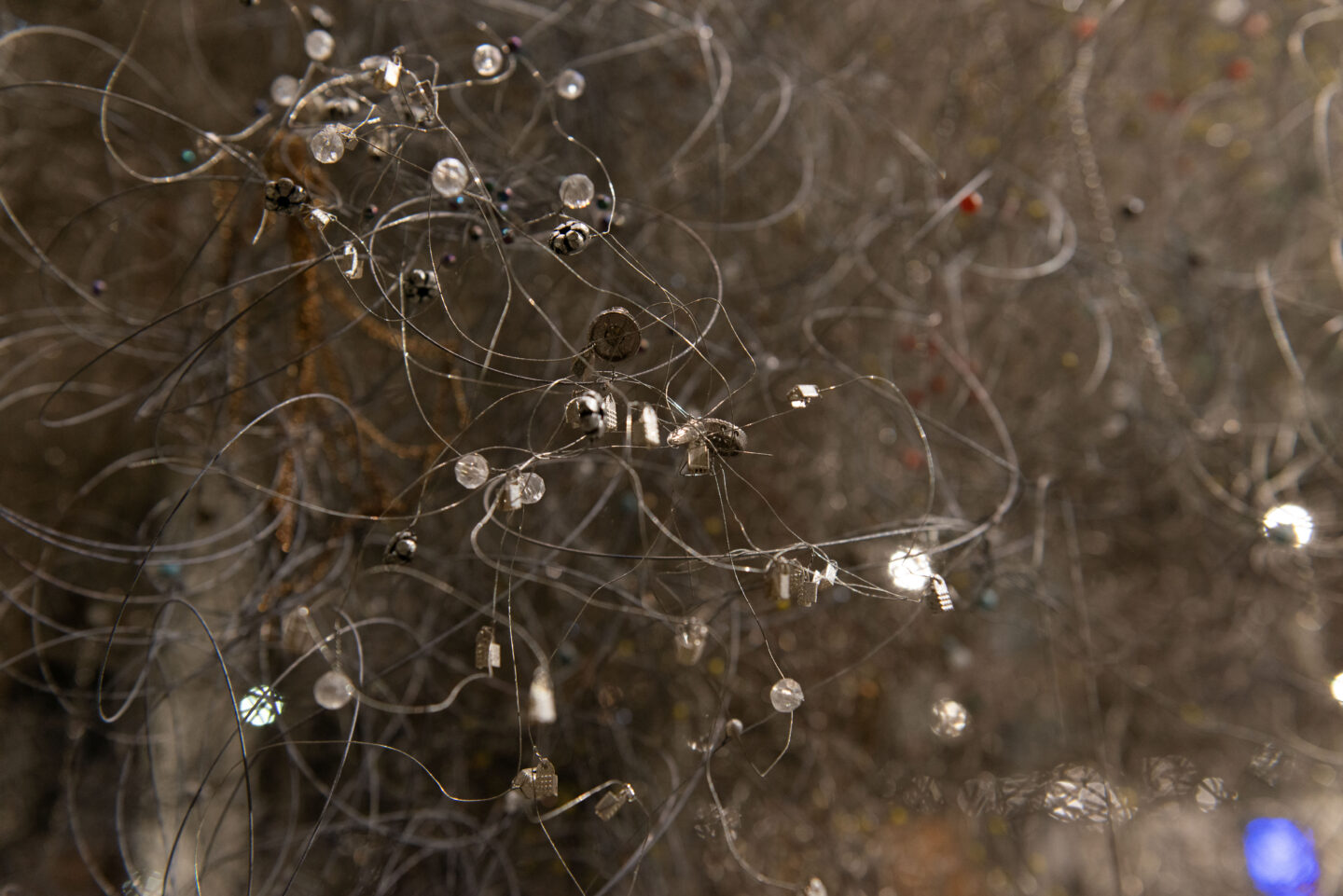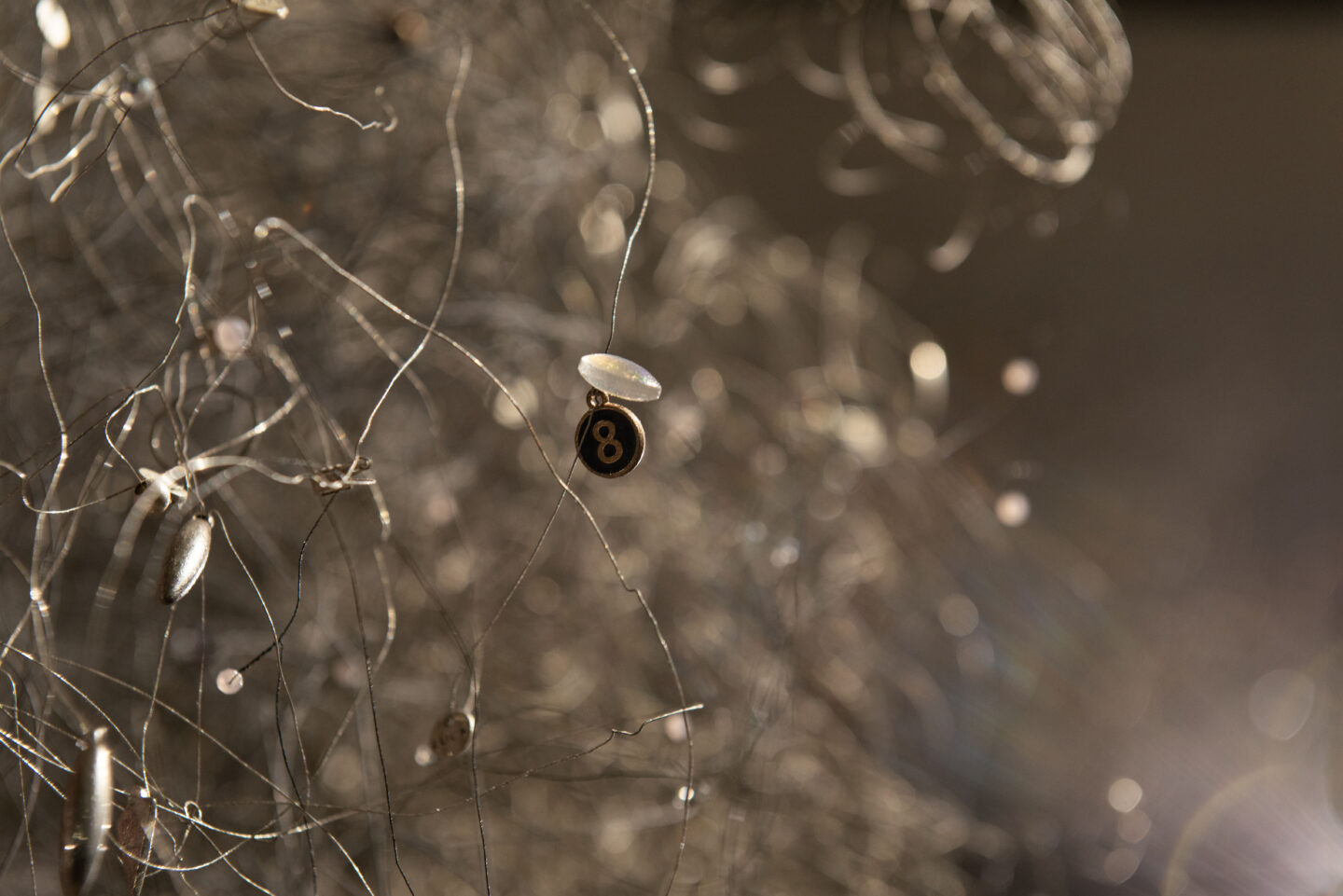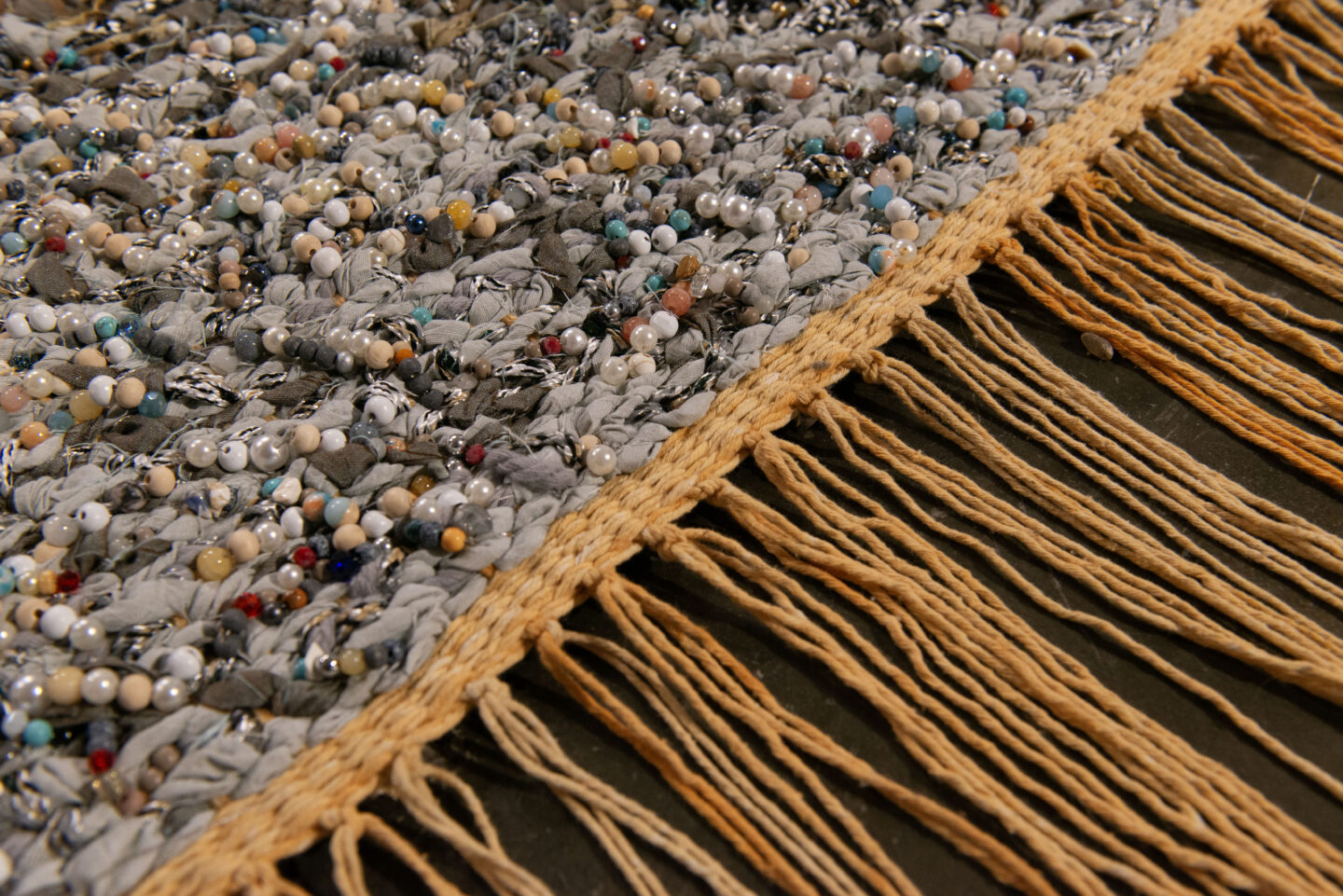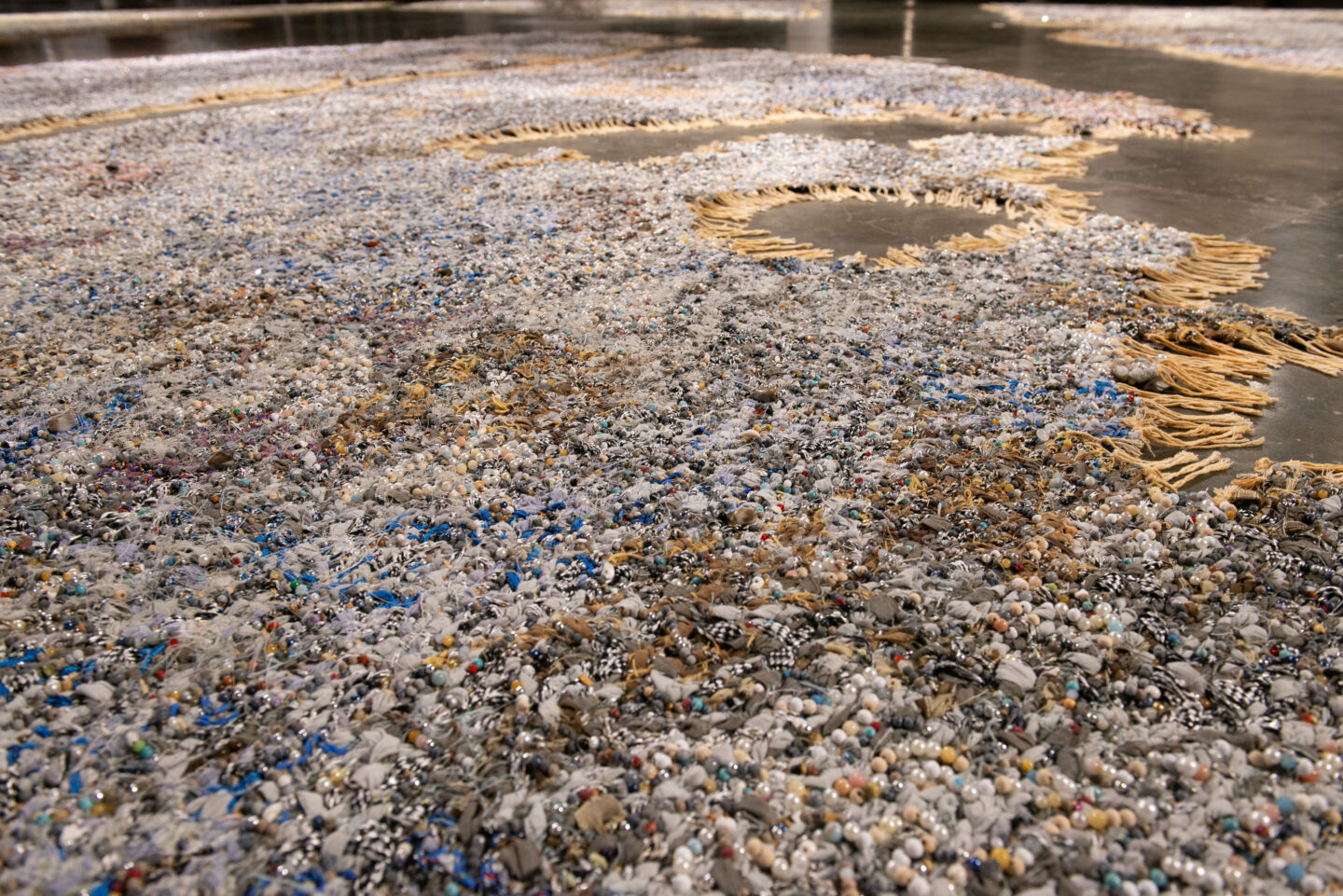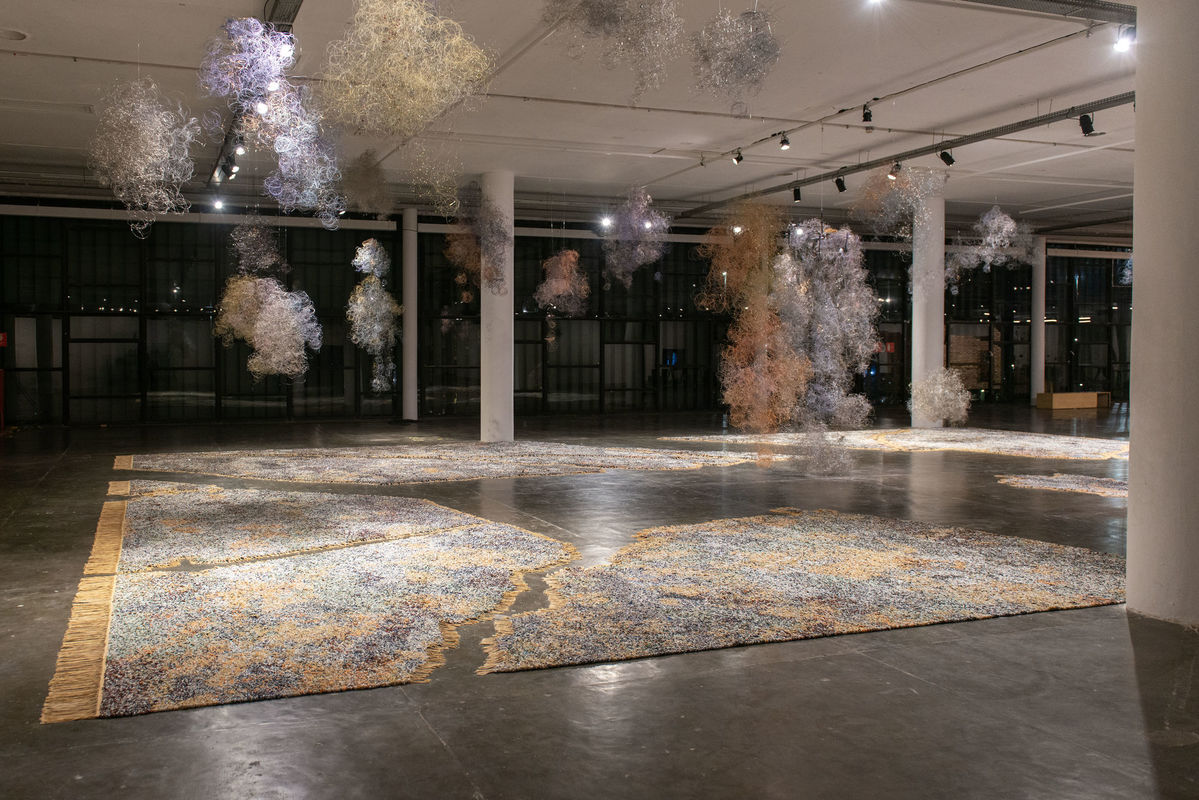
Igshaan Adams
The artistic output of Igshaan Adams consists in producing beauty from materials considered to be of little value, but which are deeply connected to the everyday life of the non-white working classes who still live in the so-called South African townships.1 His works materialize experimentations by working women and men, based on their tensioning agency of everyday life marked by racial segregation, inequality, and poverty. Sharply demarcated urban lines weaken, bend, become sinuous, and defy straight, rigid lines imposed by the Apartheid regime and its reminiscences in contemporary times.
Bonteheuwel, founded in 1960, is the birthplace and setting of the artist’s childhood memories, who lived in a Muslim and Christian home influenced by multiple traditions. The lines that rigidly divide the two sides of the city inspire Desire Lines (2022), a work that represents the shortcuts created by underprivileged workers who defy the harshness of urban layouts. Tapestry, a traditional South African craft, is the art through which Adams materializes these alternative paths, rivers, structures through which the city is (un)organized.
This tapestry is composed of ordinary objects, colored beads, shells, whelks, wire, and colored fabrics tightly woven together, producing immense multicolored carpets. As well as tapestry, other works by Adams also show the
efforts of working classes to adorn their daily lives, and, paradoxically, reaffirm and remind them of their social place, of joy or pain, of poverty and hope for better days.
It is in this somewhat dreamlike beauty, which reveals meanings both material and aesthetic, that the artist foregrounds the agency of the working classes. From these impoverished materials – regarded as worthless, commonplace, which, if they carried traces of the lives of the elites would be considered relics, museum pieces – Adams composes flowers, dust in the air resulting from people dancing who dress in ecumenical fabrics inspired
by sacred objects. The domestic takes on sensitive and intimate meaning, surpassing reality and taking on unthought, almost impossible forms.
luciana brito
translated from Portuguese by philip somervell
1. Areas created during Apartheid to confine black and mixed-race people.
- Vista da instalação site-specific Samesyn [Comunhão] de Igshaan Adams durante a 35ª Bienal de São Paulo – coreografias do impossível © Levi Fanan / Fundação Bienal de São Paulo
- Vista da instalação site-specific Samesyn [Comunhão] de Igshaan Adams durante a 35ª Bienal de São Paulo – coreografias do impossível © Levi Fanan / Fundação Bienal de São Paulo
- Detalhe da instalação site-specific Samesyn [Comunhão] de Igshaan Adams durante a 35ª Bienal de São Paulo – coreografias do impossível © Levi Fanan / Fundação Bienal de São Paulo
- Detalhe da instalação site-specific Samesyn [Comunhão] de Igshaan Adams durante a 35ª Bienal de São Paulo – coreografias do impossível © Levi Fanan / Fundação Bienal de São Paulo
- Detalhe da instalação site-specific Samesyn [Comunhão] de Igshaan Adams durante a 35ª Bienal de São Paulo – coreografias do impossível © Levi Fanan / Fundação Bienal de São Paulo
- Detalhe da instalação site-specific Samesyn [Comunhão] de Igshaan Adams durante a 35ª Bienal de São Paulo – coreografias do impossível © Levi Fanan / Fundação Bienal de São Paulo
- Vista da instalação site-specific Samesyn [Comunhão] de Igshaan Adams durante a 35ª Bienal de São Paulo – coreografias do impossível © Levi Fanan / Fundação Bienal de São Paulo
- Detalhe da instalação site-specific Samesyn [Comunhão] de Igshaan Adams durante a 35ª Bienal de São Paulo – coreografias do impossível © Levi Fanan / Fundação Bienal de São Paulo
- Detalhe da instalação site-specific Samesyn [Comunhão] de Igshaan Adams durante a 35ª Bienal de São Paulo – coreografias do impossível © Levi Fanan / Fundação Bienal de São Paulo
- Vista da instalação site-specific Samesyn [Comunhão] de Igshaan Adams durante a 35ª Bienal de São Paulo – coreografias do impossível © Levi Fanan / Fundação Bienal de São Paulo
- Vista da instalação site-specific Samesyn [Comunhão] de Igshaan Adams durante a 35ª Bienal de São Paulo – coreografias do impossível © Levi Fanan / Fundação Bienal de São Paulo
- Vista da instalação site-specific Samesyn [Comunhão] de Igshaan Adams durante a 35ª Bienal de São Paulo – coreografias do impossível © Levi Fanan / Fundação Bienal de São Paulo
- Detalhe da instalação site-specific Samesyn [Comunhão] de Igshaan Adams durante a 35ª Bienal de São Paulo – coreografias do impossível © Levi Fanan / Fundação Bienal de São Paulo
- Detalhe da instalação site-specific Samesyn [Comunhão] de Igshaan Adams durante a 35ª Bienal de São Paulo – coreografias do impossível © Levi Fanan / Fundação Bienal de São Paulo
- Detalhe da instalação site-specific Samesyn [Comunhão] de Igshaan Adams durante a 35ª Bienal de São Paulo – coreografias do impossível © Levi Fanan / Fundação Bienal de São Paulo
- Detalhe da instalação site-specific Samesyn [Comunhão] de Igshaan Adams durante a 35ª Bienal de São Paulo – coreografias do impossível © Levi Fanan / Fundação Bienal de São Paulo
- Vista da instalação site-specific Samesyn [Comunhão] de Igshaan Adams durante a 35ª Bienal de São Paulo – coreografias do impossível © Levi Fanan / Fundação Bienal de São Paulo
Igshaan Adams (Bonteheuwel, Cape Town, South Africa 1982. Lives in Cape Town) is an artist merging performance, weaving, sculpture, and installation in his work. He draws upon his background to contest racial, sexual and religious boundaries. His large-scale tapestries remember movements, dances and paths that inscribe personal and collective stories. His work has been exhibited at Kunsthalle Zürich (Switzerland), Zeitz Museum of Contemporary Art Africa (Cape Town, South Africa) and the 59th Venice Biennale (Italy).

 Português
Português